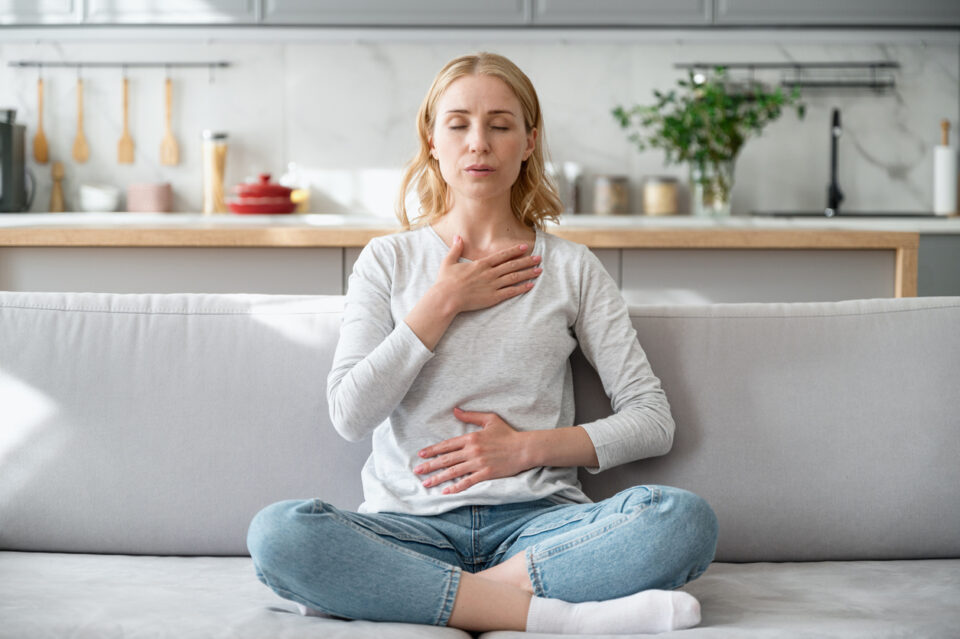Grounding Techniques
Grounding for Anxiety and Stress
by Hilary Richards, MSW, LMSW
What is grounding?
Grounding is a term used to describe a set of self-help strategies used to distance, distract, dull and/or detach from emotional pain. People with a history of trauma, PTSD, and anxiety disorders often experience unwanted thoughts or memories, flashbacks, intense distressing emotions, panic attacks and dissociation. These symptoms can be deeply distressing and interfere with many areas of daily living. In addition to therapy and medication, grounding techniques are helpful in managing these symptoms.
Purpose of Grounding
The purpose of Grounding techniques is to get out of the past, out of the future, and into the present moment. This is achieved by focusing your attention on the here and now through engaging your five senses. Consciously focusing attention on the external world vs your internal emotional experience allows you create space from overwhelming emotions, urges and/or impulses and gain control over your feelings.
Types of Grounding:
There are many different grounding techniques that fall under one of three categories – mental, physical, and soothing.

Mental Grounding
“Mental” means focusing your mind. Consciously focusing on your environment or a mental task activates your “thinking brain” and gets you out of your “emotional brain.” A few examples include…
Describe your environment in detail: Look around and simply name what you observe to yourself. Describe objects, sounds, textures, colors, smells, shapes, numbers, and temperature. For example, “there is a brown chair in the corner, it has a white, fleece blanket on it… there are three square pictures hanging on the wall… the walls are grey… I hear people talking in the other room… I am sitting in a chair, the cushions are soft, the metal is cool… I smell a candle burning… etc.
Tip: Stay neutral. Refrain from adding judgments such as “good” or “bad” or “right” or “wrong.” Simply notice what you observe without adding how you personally think or feel about it and move on.
Name categories: For example, name as many zoo animals as you can think of, things that start with the letter “A,” breeds of dogs, vegetables, cars, etc.
Describe an everyday activity in detail, listing all the steps in order and as thoroughly as possible. For example, describe the steps to make your favorite meal, drive to work, favorite dance, etc.
Say or think the alphabet backwards or alternate letters and numbers (A1, B2, C3, D4, etc).
Physical Grounding
Physical grounding is achieved by activating your senses to bring awareness to your body in the present moment; creating distance from worrisome thoughts and emotions. Some examples include…
Focus on breathing: Place one hand on your chest and one hand on your stomach and breathe deeply. Notice your hands move up and down with each breath. Draw your exhales out so they are longer than your inhales. For example, inhale to the count of 4, hold for 2, exhale to the count of 6.
Notice your body: Press your feet into the ground, jump up and down, feel the weight of your body in the chair, clench and release your fists, stretch your arms and legs and roll your neck, ankles and wrists.
Run cool water over your hands and/or splash cool water on your face.
Touch and hold various objects around you and notice texture, weight, temperature, color and material.
Bite into a lemon, orange, or lime, suck on a sour or minty candy or an ice cube, chew cinnamon-flavored gum, or put a few drops of Tabasco sauce on your tongue. Notice the flavor, scent, and texture.
Eat something or drink warm tea, coffee, or hot chocolate, and describe to yourself the taste and texture in great detail.

Soothing Grounding
Soothing grounding techniques can generate a feelings of comfort, encouragement and support. Some examples are…
Self-affirmations or mantras: “I am safe… I can handle big things… This feeling will pass… Just Breathe…”
Picture yourself breathing in relaxation, calm, positive feelings, or strength. Picture yourself breathing out whatever is upsetting you. It may help to pair this with imagery of breathing in soothing colors (usually blue, purple, or green) and out more intense colors (usually red or black).
Visualize a fun/happy/peaceful memory in great detail. Who was there… what were you doing… where were you… how did you feel… what did you see, hear, feel, smell, taste?
Listen to soothing or familiar music. If possible, dance to it!
Grounding Tips
Many grounding techniques are subtle and can be done anywhere without other people noticing. The examples above are a few of many grounding techniques. Some people find that some grounding techniques work better for them than others. And some grounding techniques may be better for some situations than others. It’s encouraged to practice different techniques often, preferably before you actually need them. That way you can get a feel for what you like best and you will be familiar with how to use them so you’re not trying to remember them in the moment when you’re already overwhelmed.You can try as many techniques as you want: The more you try, the higher the chance you’ll find at least one that works for you.
Summary
Grounding does work for many people as a self-help, self-soothing technique. Grounding is not the same as processing techniques as it does not involve getting in touch with one’s emotions or struggles. Instead, grounding orients one to the present moment and helps achieve a healthy balance between being cut off from or overwhelmed by emotions. Grounding does not replace traditional talk therapy or medication which may be necessary for some people, but it can be a helpful adjunct to traditional treatment approaches.
